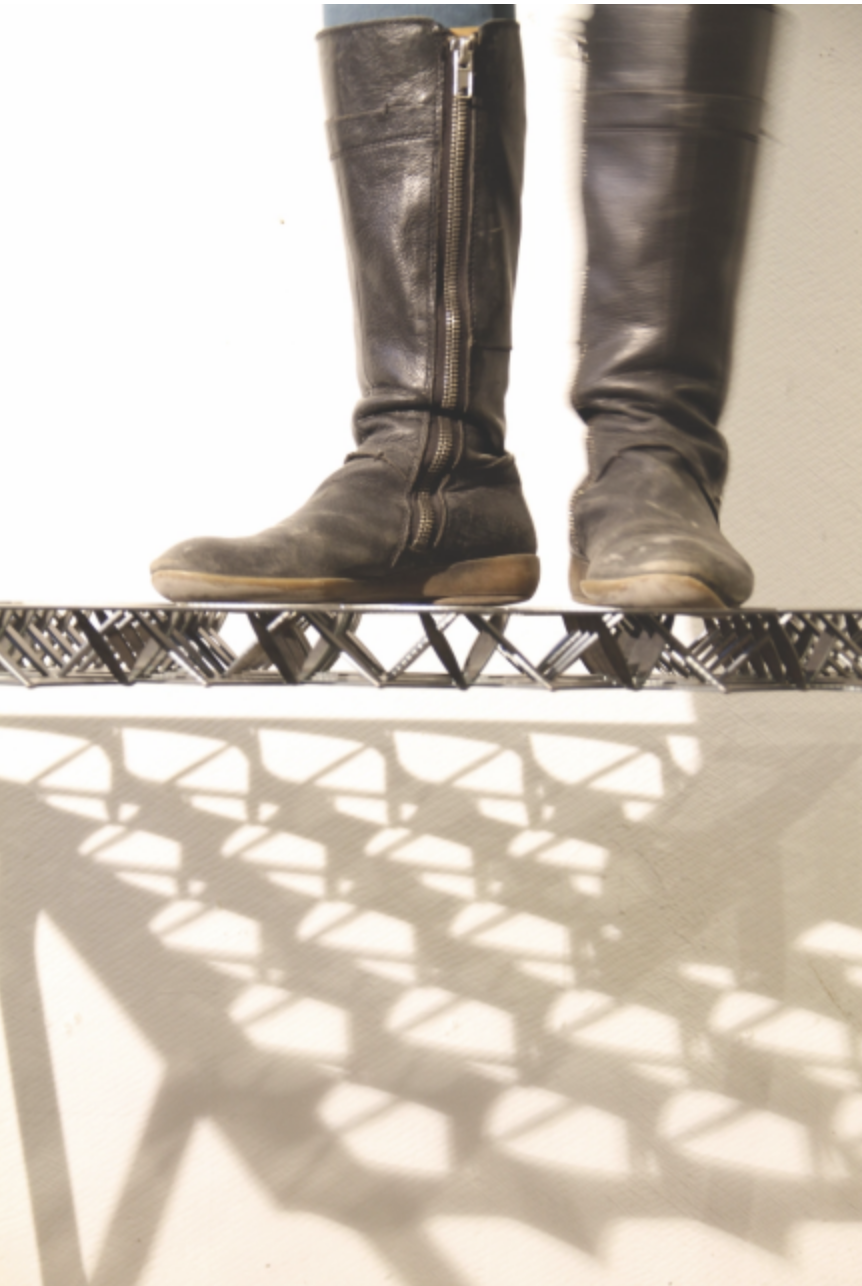About
PERSONAL STATEMENT
The focus of my scholarship, creative work and teaching has been in developing novel structural and construction systems that employ both digital tools for design and fabrication and hand capacities. I have pursued this work through constructed experimentation and prototyping at large to full scale, allowing for a directed evolution of material systems that emerge, rooted in material process and constructional logics, through the act of iterative making. Systems, thus refined, possess an elegant functionality in which deceptively simple means produce depth of structural and formal possibility, while reducing construction time and material waste.
BIOGRAPHY
Emily Baker is an inventor, fabricator, architect, and educator. Her work investigates choreographies of construction augmented by emerging technologies, hand capacities, and delight. Full-scale constructed experimentation informs her creative practice, research, and teaching, centering on self-structuring material systems. Recent publications include an invited essay in the May/June 2023 issue of AD and a chapter in the book Fabric[ated]: Fabric Innovation and Material Responsibility in Architecture. She was awarded the AISC Early Career Faculty Award. She earned an ACSA Design Build Award for the Audi-Fab design/build studio sequence, and the work also received an AIA Design Merit award. Her work, Study in Spin-Valence, is in the permanent collection of Cranbrook Art Museum, and her sculpture collaboration with mathematician Edmund Harriss, Curvahedra, is permanently installed on the campus of University of Arkansas. Her current collaborations include researchers from MIT, UVA and Princeton University on novel structural and construction systems, Zip-Form and Spin-Valence. She holds degrees in architecture from University of Arkansas and Cranbrook Academy of Art. She teaches studios, structures, and fabrication at the University of Arkansas, and she previously taught at the American University of Sharjah and Tulane University.
Wonder propels my practice. As does a haptic and tactile relationship to materials. I learned early that fascination with the systems embedded in the world—both natural and synthetic—and playful engagement with them yields discovery. Laying hand on matter to create something new is an essentially human act. I endeavor to access fundamental haptic intelligence within design and find that instead of distancing me from material systems, the use of CAD CAM technologies grants me access to materials in a way I never thought possible.
As an architect/maker, my shop becomes my studio. Equipped with CNC plasma, I bend steel to my will and work iteratively at full scale, allowing systems of fabrication to evolve in function and in adaptation to ease of construction. My end is not often a certain form or a certain aesthetic, but each of these suggests itself and emerges from the iterative process, rooted and tuned. Most of my recent work has made use of steel in relationship with digital means of cutting, though the ideas translate to a wide range of materials. My work springs from direct engagement with digital fabrication tools that allows intuitive and improvisational access to the material that would not be possible in purely digital space.
My practice seeks fresh architectural territory in the gaps among novel and emerging structuring and construction systems, new digitally-driven tools for material fabrication, and traditions of hand work. I see a parallel to architecture in the progression of music over recent decades. As digital means of both creating sound and controlling its rhythm and beat emerged, artists found ways of maintaining the “human” quality in their music—sampling live sound, using composition methods that oscillate between digital and analog. I believe that architecture can take cues from this aspiration to humanize. As it ushers in technology that transforms practice and construction, architecture must seek new ways of relating to the body, the hand and thus the mind.

Emily Baker, AIA, NCARB
University Of Arkansas
Fay Jones School Of Architecture + Design